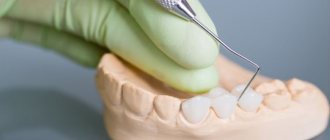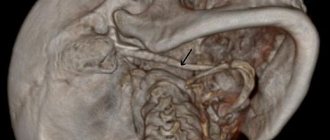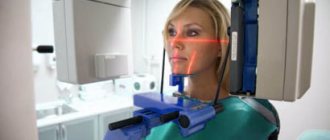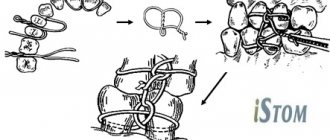General information
Jaw tumors refer to neoplasms in the cat's tissue. This pathology accounts for 13 to 29% of the total number of dental surgical diseases.
Due to its close location to the teeth, brain and eyes, the pathology is characterized by a special clinical course. Tumor formations in this area lead to functional disorders, aesthetic defects and even death.
Depending on the tissue of which the tumor is composed, it can be osteogenic or non-osteogenic. According to the clinical development of pathologies, there are malignant, benign or locally destructive.
Treatment of jaw tumors is a complex and lengthy task that requires high competence and professionalism from the doctor.
Osteoblastoclastoma - treatment
Treatment for osteoblastoclast of the jaws is surgical. In cystic and cellular forms, careful curettage of the lesion is usually sufficient. If the tumor occupies large areas of the jawbone, it is possible to perform resection of the lower jaw, if necessary, with simultaneous bone grafting. In the lytic form, partial resection of the jaw without breaking the continuity of the mandibular bone (continuum resection) or resection of a fragment of the jaw with simultaneous bone grafting is more often used. Radiation therapy does not provide sufficient therapeutic effect. However, this method of treatment is prescribed to patients for whom any surgical intervention is contraindicated due to their general somatic status. Usually short-focus X-ray therapy, remote gamma therapy, bremsstrahlung and high-energy electron radiation are used. The average radiation dose ranges from 30–50 Gy/kg. The prognosis for treatment is favorable, but the possibility of malignancy and metastasis of the tumor due to the benign nature of the tumor cannot be excluded. Incorrect treatment tactics usually lead to relapses of the tumor process.
Published in Articles
Reasons for development
The exact mechanism of tumor development is unknown. It is generally accepted that odontogenic tumors develop under the influence of malformations of jaw tissue.
Provoking factors:
- chronic inflammatory process of tissues of the jaws and adjacent organs;
- the impact of filling composition and other foreign objects on the maxillary sinus;
- damage to the jaw bones and soft tissues due to bruises and other mechanical impacts;
- the effect of nicotine, alcohol and other chemicals on the oral cavity.
Malignant tumors develop due to the spread of metastases from cancerous tumors in other organs.
Clinic
GKO lesions can be not only solitary, but also multiple
The clinical course of cellular and lytic forms of benign GCT is not the same. Tumors of the first group are asymptomatic for a long time and in half of the cases are detected only when a pathological fracture appears.
Lytic GCT grows quickly, the first symptom of the disease is pain of varying intensity. When the tumor is localized in the long tubular bones, it often causes rapid fatigue of the limb and lameness; when the spine is affected, the pain is predominantly radiating. Radiologically, two phases (forms) of the course of GCT are distinguished: cellular trabecular and lytic.
CT with signs of GCT: damage to the epimetadiaphysis, expansion of the medullary canal with destruction of the endosteum, swelling of the cortical layer, shell-shaped periostosis, low level of mineralization. MRI is the best method for determining the extent of GCT. It is useful for early detection of local recurrences. The GCT usually has clear contours at the border with intact bone and is often surrounded by a hypointense rim.
Classification and clinical course
Due to the variety of forms and stages, it is difficult to develop a unified classification of jaw tumors. The WHO classification provides for subdivision according to clinical manifestations, histology and anatomical location.
Clinical symptoms, course and prognosis are determined by the type, location and stage of the disease.
- Odontogenic benign
Ameloblastoma is a neoplasm that develops from epithelial cells with inclusions that resemble enamel in structure. Pathology affects people aged 20 to 40 years. As the tumor grows, the patient experiences pain in the jaw and teeth. An external examination reveals a dense structure, fusiform and painless thickening of the jaw bone, causing facial asymmetry. Mobility causes teeth to shift. There is a risk of developing suppuration in case of infection.
Odontomas are pathologies characteristic of children under 15 years of age. The tumor consists of hard tissue, including the pulp and periodontium. It is characterized by its small size and asymptomatic course. When it grows to large dimensions, it deforms the jaw, causing fistulas and pain.
Odontogenic fibroma is a childhood pathology that is formed from the connective tissue of the follicle and is located on both jaws. Characterized by slow, asymptomatic growth. Rarely manifested by aching pain and inflammation in the affected area. Subtype – cementing fibroma.
Cementoma is a formation of connective tissue growing into the cementum of the tooth root. The tumor is localized on the lower jaw in the area of the molars. Asymptomatic.
- Underontogenic benign
There are bone- and cartilage-forming types and osteoblastoclastoma. The list of bone-forming substances includes: osteoma, exostosis, osteophyte, etc.
Osteoma is a dense formation of mature bone tissue. It can be asymptomatic or with pronounced manifestations: pain during chewing, facial asymmetry, mobility of units.
Chondroma is a cartilaginous type of tumor. Localized in HF. It is characterized by slow growth and painlessness.
Osteoblastoclastoma is diagnosed in people under 20 years of age. Patients note a gradual increase in pain in the jaw, asymmetry of facial features, hyperthermia, and the occurrence of fistulas. There is a risk of developing fractures of the lower jaw.
- Malignant neoplasms
They occur 4 times less frequently than benign pathologies. They are odontogenic and non-odontogenic. They are characterized by severe symptoms, an aggressive course and a danger to life.
Osteogenic sarcoma. An aggressive tumor with rapid growth, pronounced pain, radiating to neighboring organs. The symmetry of the face is disrupted, infiltration of soft tissues and metastases to other organs are observed.
Carcinoma. It develops on the HF, growing into the nasal cavity. Purulent rhinitis and nosebleeds develop. When it grows into the orbit, lacrimation, exophaltmus and other complications are noted.
Diagnostics
Late diagnosis of neoplasms is due to the asymptomatic course and low oncological alertness of patients and doctors.
Diagnostic methods used:
- interviewing the patient and collecting anamnesis;
- clinical examination;
- X-ray diagnostics;
- CT;
- scintography;
- infrared thermography;
- biopsy.
If necessary, the doctor prescribes highly specialized examinations.
Treatment algorithm
When jaw tumors are detected, surgical treatment is required. The tumor is excised along with part of the adjacent healthy tissue. This reduces the risk of relapse and malignancy.
In some cases, the use of curettage is allowed. Teeth located in the problem area are subject to extraction.
Aggressive osteoblastoma of the mandible: diagnostic difficulties
Osteoblastoma is a benign tumor that accounts for less than 1% of all bone tumors and most often affects the spine and sacrum of patients at a young age. Less than 10% of all osteoblastomas are located on the skull, and approximately half of them involve the mandible, especially its posterior segments. The very first detailed description of a case of osteoblastoma of the jaw bones was carried out by Borello and Sedano in 1967.
Since the discovery of the tumor by Jaffe and Mayer in 1932, the nomenclature of osteoblastoma has changed dramatically. Names proposed include osteoblastic osteoid-forming tumor, giant osteogenic fibroma, and giant osteoid osteoma. In 1956, this neoplasm was clearly distinguished from osteoid osteoma and identified by Jaffe and Lichtenstein as a separate nosological form: benign osteoblastoma. This name has been approved by the World Health Organization and the Institute of Pathology.
This bone tumor occurs at a young age (on average 20 years) in men and women in a ratio of 2:1. Clinically, the disease is characterized by severe pain lasting from several weeks to a year or more. Radiologically, the tumor may begin to appear as a radiolucent area with poorly or well-defined edges and varying degrees of mineralization. Although the use of radiological examination is very important, the final diagnosis is made only after a histopathological report.
This article describes a case of aggressive osteoblastoma in the posterior segment of the mandible in a 26-year-old woman.
Description of a clinical case.
A 26-year-old woman came to the clinic with complaints of a slowly growing painful swelling in the right posterior part of the lower jaw, which had been developing over the past 3 years. The pain is moderate and intermittent. An external examination revealed a swelling with a smooth surface measuring 3 x 3 cm, affecting the right part of the body of the lower jaw approximately from the symphysis of the chin to the second lower molar on the right side and causing pronounced facial asymmetry. Intraoral examination is unremarkable, the mucous membrane over the swelling is not changed. No lymphadenopathy was detected by palpation.
An orthopantomogram reveals a large radiolucent zone affecting the second lower molar on the right side. The formation contains calcified masses approaching the distal root of the second molar, as well as several radiopaque areas located against the background of the clearing zone. This formation was well defined and caused bulging and thinning of the bone tissue of the lower edge of the lower jaw. (Photo 1).
Photo 1: Orthopantomogram. Large single-cavity radiolucent lesion involving the right mandibular second molar, with areas of mineralization
Differential diagnosis included cementoblastoma, osteoid osteoma, ossifying fibroma, and focal cemento-osseous dysplasia.
Subsequently, the tumor was scraped out. The removed tissue, as well as the second molar, was sent for histopathological examination (Figure 2).
Photo 2: Photograph of tissue sample: material obtained after curettage and lower second molar
Light microscopy of the hematoxylin-eosin-stained specimen revealed an irregular bone structure with many cells and loose fibrovascular connective tissue stroma. A large number of areas of osteoid and cementoid formations were also found. The bone was composed of large osteocytes surrounded by a clear rim of osteoblasts (Figure 3a and b). Along the edge of the neoplasm, mature trabeculae are visible, clearly delimited from the rest of the tissue by a demarcation line. The specimen contained giant cells with several nuclei. No atypical mitotic activity was detected.
Figure 3a: Photomicrograph of specimen showing irregular bone, rims of osteoblasts and fibrovascular connective tissue stroma (hematoxylin-eosin, x100)
Figure 3b: Photomicrograph of a specimen showing large osteocytes, modified osteoblast-like cells, surrounded by osteoid substance. (hematoxylin-eosin, x400)
Histopathological examination allowed a diagnosis of aggressive osteoblastoma.
Discussion.
Osteoblastoma is a fairly rare bone tumor for which damage to the jaw bones is not typical. However, cases of its occurrence in the posterior part of the lower jaw have been described. Differential diagnosis is often particularly difficult due to the unclear radiological and clinical appearance, as well as the histological features of this tumor, which sometimes resemble osteosarcoma.
Typical osteoblastomas are biologically benign and limited in growth, typically no more than 4 cm in diameter. But there is also a small group of borderline, more aggressive osteoblastomas. Such tumors cannot be classified as “typical” and are therefore classified as a separate class of lesions with the names: osteoblastoma-like osteosarcoma, malignant osteoblastoma, or aggressive osteoblastoma.
Aggressive osteoblastomas occur at a later age than tumors with a benign course. Clinically, these neoplasms exhibit more aggressive behavior. They can grow into neighboring tissues, and after treatment they recur in 10-21% of cases, but never metastasize. The histological picture is more reminiscent of osteosarcoma than a benign neoplasm. Some authors have stated that the disease called aggressive osteoblastoma is actually a high-grade osteosarcoma that resembles the course of osteoblastoma. Diagnosis is based on the histological features and clinical picture of the lesion.
Differential diagnosis is carried out with a wide variety of diseases, such as cementoblastoma, osteoid osteoma, fibrous dysplasia, ossifying fibroma, focal cemento-osseous dysplasia, as well as borderline malignant forms of the above pathologies and slowly progressing osteosarcoma.
Benign cementoblastoma is included in the differential diagnosis due to similar radiographic findings with osteoblastoma. The main distinctive features of cementoblastoma are revealed by careful examination of the surface of the tooth root on an x-ray, and it is also believed that the affected area by cementoblastoma looks more uniform in shadow. In this clinical case, the tumor masses did not affect the tooth, despite its very close location to it. Microscopically, these two diseases look the same, so the final diagnosis of cementoblastoma cannot be made until the fact of tooth damage is confirmed.
Another difficulty is confusing osteoblastoma with osteoid osteoma. Clinically, benign osteoblastoma does not usually cause the pain that is characteristic of osteoid osteoma. Also, osteoblastoma is a fairly large neoplasm, usually about 1 cm in diameter, and does not cause sclerosis of bone tissue, which is again characteristic of osteoid osteoma. Microscopically, the bone trabeculae of osteoblastoma are slightly wider than those of osteoid osteoma and also have a more regular orientation. Osteoblastoma has a huge number of osteoblasts, while osteoid osteoma has few giant cells and poor vascularity.
Histopathologically, ossifying fibroma and fibrous dysplasia of bone may resemble osteoblastoma, but they are typically less mineralized and mildly calcified in contrast to the large mineralized fragments of osteoblastoma. In addition, fibrous dysplasia does not appear as demarcated radiographically as osteoblastoma and may also be multifocal, which is uncommon in osteoblastoma.
Focal cemento-osseous dysplasia is a fibro-osseous lesion that may appear very similar to osteoblastoma on radiographs. However, the former is typically asymptomatic and does not damage the cortex. Most of these formations are less than 1.5 cm in diameter. Although, upon microscopic examination, both pathologies damage bone tissue in a similar way. In focal cemento-osseous dysplasia, a small number of large and actively proliferating osteoblasts are determined.
Histological examination is of paramount importance in making a final diagnosis and excluding osteosarcoma, especially the osteoblastic variant. The difficulty in distinguishing arises from the presence in osteoblastoma of modified osteoblast-like cells, similar to atypical osteosarcoma cells. In such cases, diagnosis is based on accurate interpretation of histological and radiological studies, the findings of which exclude aggressive characteristics of osteosarcoma. Bertoni and other scientists believe that the main microscopic feature that distinguishes osteosarcoma from osteoblastoma is the small number of mature trabeculae at the edge of osteosarcoma and the high penetration of this tumor into surrounding tissues.
Due to the benign nature of osteoblastoma, the main treatment is conservative excision, since recurrence is rare (13.6%) and is usually associated with a complicated course. It should also be noted that there is no uniform description of the biological behavior of this tumor. Looking at the various study reports, it becomes clear that the course of this disease varies greatly depending on the specific clinical case.
Conclusion.
The importance of the clinician understanding the tumor process and its individual course should be especially emphasized. To make a final diagnosis, it is necessary to take into account clinical and radiological data in strict conjunction with the results of histological examination. At the same time, the entire pathology must be qualitatively classified and segmented to facilitate diagnosis and prescribe appropriate, strictly specific treatment.
Authors: Harshaminder Kaur, Sonika Verma, Manveen K. Jawanda, Atul Sharma Department of Oral and Maxillofacial Pathology, College of Dental Research, Mullana, Haryana, India
Treatment
The adequacy of surgical treatment depends on the extent and type of the pathological process.
In benign forms with a cellular structure and limited size of the pathological focus without violating the integrity of the articular cartilage, with a calm clinical course, preservation operations are performed in the form of periarticular resections with mandatory electrocoagulation of the walls of the bone cavity and allo- or autoplasty of the defect.
In lytic forms with rapid tumor growth and large sizes of the pathological focus, with destruction of articular cartilage and when tumor masses enter the joint cavity, segmental resections of the articular end are performed with replacement of the defect with an oncological endoprosthesis. When performing the operation, the intervention must be ablastic, opening the tumor is excluded, bone resection should be performed at a distance of 5 cm from the end of the tumor. Radiation therapy should not be used in children due to the dangers of malignancy of GCTs and disruption of growth plates. For the malignant form of GCT, combined and complex treatment is carried out, corresponding to the tactics used for osteosarcoma. Surgical intervention includes segmental resection of the affected bone along with the articular end and replacement of the defect with an oncological prosthesis.









